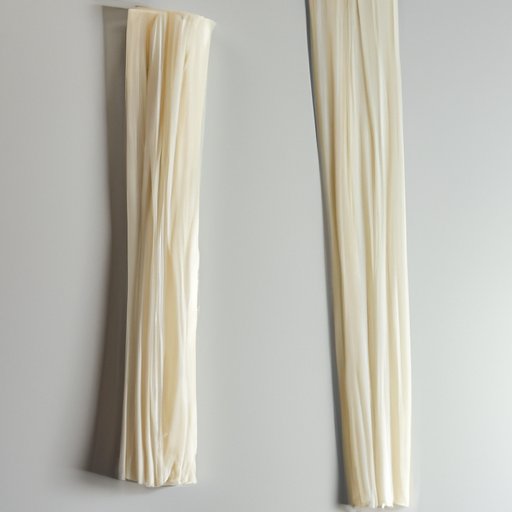
Introduction
For those with gluten intolerance or celiac disease, finding suitable and tasty food options can be a challenge. Noodles, a widely popular food, may seem off-limits due to the use of wheat-based ingredients. However, fear not, as there are plenty of delicious gluten-free noodle options available. This article serves as a comprehensive guide to exploring the world of gluten-free noodles, providing useful information on ingredients, recipes, and tips for shopping.
Exploring the World of Noodles: A Comprehensive Guide to Finding Gluten-Free Options
Noodles come in countless shapes, sizes, and ingredients. Some of the most common noodle varieties include wheat noodles, rice noodles, and bean-based noodles. Unfortunately, most wheat-based noodles contain gluten, making them unsuitable for those with gluten intolerance or celiac disease.
However, there are plenty of alternatives to traditional wheat noodles that are both delicious and gluten-free. Rice noodles, for example, are a popular option made from rice flour and water. Additionally, bean-based noodles made from mung beans, black beans, or soybeans are gluten-free and high in protein. Brands such as Banza, Explore Cuisine, and Cybele’s offer a plethora of gluten-free noodle alternatives.
Satisfy Your Cravings: A List of Delicious Gluten-Free Noodle Recipes
Whether you’re in the mood for a warm bowl of soup or a stir fry, there are endless possibilities for delicious gluten-free noodle dishes. Here are a few recipe ideas to get you started:
- Gluten-free Pad Thai
- Spicy Sichuan Noodles
- Vietnamese Pho
- Zucchini Noodle Lasagna
- Tomato and Basil Pasta Salad made with gluten-free pasta
When preparing gluten-free noodles, it’s important to follow the cooking instructions closely and not overcook them. Gluten-free noodles can quickly turn mushy if boiled for too long.
Breaking Down the Ingredients: Which Noodles Are and Aren’t Gluten-Free
Gluten is a protein found in wheat, rye, barley, and other similar grains. For those with gluten intolerance or celiac disease, consuming gluten can cause severe discomfort, digestive issues, and damage to the small intestine. Therefore, it’s essential to know which noodles contain gluten and which don’t.
Wheat-based noodles are not gluten-free, and should be avoided by those who are gluten intolerant. Some wheat-based noodles include spaghetti, fettuccine, ramen, soba, and udon. However, there are plenty of gluten-free alternatives, such as rice noodles, mung bean noodles, and zucchini noodles.
Navigating the Grocery Store: Tips for Identifying Gluten-Free Noodles
Reading food labels is crucial for finding suitable gluten-free noodle options. Look for labels that specifically state “gluten-free” or “certified gluten-free.” Be cautious of labels that say “wheat-free,” as this does not necessarily mean that the product is gluten-free. Additionally, be careful with noodle packets that have added sauces or seasoning, as these often contain gluten.
If you’re unsure about a specific product, don’t hesitate to contact the manufacturer or do some research online. Many grocery stores also offer gluten-free sections or specific labels for gluten-free products.
The Pros and Cons of Gluten-Free Noodles: Are They Worth the Hype?
Gluten-free noodles offer several benefits, such as catering to those with gluten intolerance or celiac disease, and providing alternative, healthy ingredients for others. However, there are also some potential drawbacks to consider.
Gluten-free noodles can be more expensive than traditional wheat noodles, which may put some people off. Additionally, gluten-free noodles may not have the same texture as wheat-based noodles and may require some experimentation to find the best cooking methods and recipes. Overall, the benefits of gluten-free noodles outweigh the potential drawbacks, and many people find them to be a tasty alternative to traditional wheat noodles.
Conclusion
When it comes to finding suitable and delicious gluten-free noodle options, it’s important to explore the variety of brands and ingredients available. Rice noodles, bean-based noodles, and zucchini noodles are just a few of the countless gluten-free noodle options available. Paying attention to ingredients, cooking instructions, and food labels will ensure that you can satisfy your noodle cravings without any discomfort. With these tips and tricks, you’ll be an expert in finding and preparing delicious gluten-free noodle dishes in no time.




